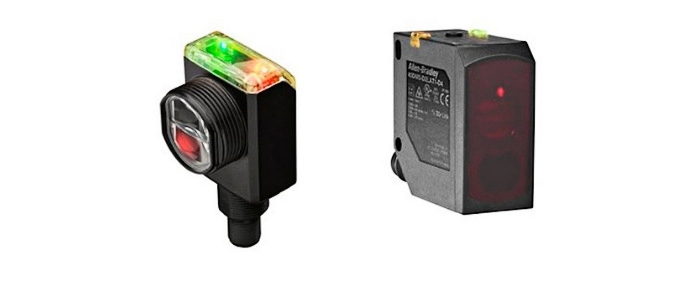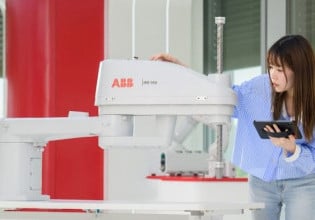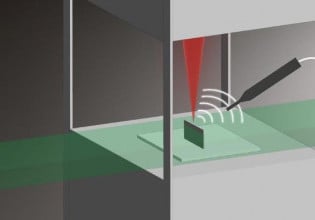Introduction to Smart Sensors
Smart sensors differ from traditional sensors in that they offer benefits such as self-diagnostics, simplified wiring and communication, and more efficient remote monitoring.
What are Smart Sensors?
Smart sensors sense physical phenomena, convert them into another form—usually in electronic signals—and process the data collected. This feature relieves the external controller or programmable logic controller (PLC) in executing sensor output processing.
Instead, it allows the central controller to focus more on system-level functions, such as process automation or analytics. This is in contrast to traditional sensors that only convert the physical phenomenon to another form and send the value to the central controller.
Figure 1. Video used courtesy of SICK
The smart sensor output is ready data for the main controllers. For example, the internal mechanism of a smart sensor can prevent false detection in a harsh environment. Their output signal strength and threshold automatically adjust to the environmental conditions. This is different than the traditional sensor, where the main controller tackles this problem.
Components of a Smart Sensor
The components inside a smart sensor depend on the sensor’s functionality and can vary from model to model. Commonly, the components include the sensing element, a microprocessor unit (MPU), and a communication module.
Sensing Element
The sensing element senses the physical phenomenon, such as the temperature or humidity, and converts it into the analog signal. There can be more than one sensing element in a smart sensor, allowing the same sensor to sense multiple phenomena without using multiple sensors.
The sensing element’s output is analog, and it interfaces to the microprocessor for various signal conditioning purposes.
Microprocessor Unit (MPU)
The sensing element output runs into the microprocessor unit (MPU). The MPU is the heart of the smart sensor, and it is where all essential functions are carried out. There are two functions performed in an MPU: signal conditioning and delf-diagnosis.

Figure 2. A few Allen-Bradley smart sensor options. Image used courtesy of Rockwell Automation
In signal conditioning, the MPU performs signal-level signal processing functions before transferring to the central controller. These functions, such as filtering and noise reduction, are necessary to extract information from the collected data.
In self-diagnosis, the sensor assesses its reliability. This allows the sensor to watch its performance and take action when it detects any performance deviation. Examples include self-calibration and auto-zero functions.
Self-diagnosis helps remove abnormalities occurring in the signal output before it is transferred to the main controller. This contrasts with standard sensors, where these abnormalities are removed manually (for example, manual inspection) or by implementing programming functions in the main controller.
An essential characteristic of an MPU is its low power design, enabling it to consume less power. This makes it easy for the smart sensor to have a long life without frequently replacing the batteries.
Communication Module
The communication module manages communication between the smart sensor and external devices. In addition to signal information, the smart sensor can also communicate identification (ID), analyzing an individual sensor’s health and connection status. Another advantage is an automatic sensor configuration from the main controller for the sensor.

Figure 3. Smart sensors can communicate with the control system through Fieldbus or Ethernet. Image used courtesy of SICK
Sensors are added as a node in an intelligent sensor network. This helps expand the network without additional re-wiring in case of sensor addition.
The communication can be wired or wireless and is governed by communication protocols. There are many protocols for smart sensor communication, depending on the system application and application area. For example, smart sensors often utilize the Fieldbus protocol in industrial applications. Comparatively, building automation typically uses BACnet.
Advantages of a Smart Sensor
Smart sensors have distinctive characteristics that no other sensor types offer. Below are some advantages that smart sensors provide, such as self-diagnostics and simplified wiring.
Self-diagnostics
Smart sensors can collect intelligent data to predict the future performance of the sensor and its associated process. The smart sensor can analyze the ongoing operation and conclude the sensor’s working and process condition based on the collected data.

Figure 4. The Danfoss Edix platform is one way to run self-diagnostics and monitor remotely. Image used courtesy of Danfoss
The self-diagnostics feature is more effective than manual inspection, as the self-diagnostics operation is continuous and helps prevent human errors. For example, if the signal strength output of a proximity sensor decreases below a threshold point, it can initiate a signal to alert the system or operators. Some smart sensors can also communicate potential causes, such as the dirt accumulation at the sensor head.
Simplified Wiring
Smart sensors utilize different protocols for communication. This allows the sensor to act as a node without directly connecting to the main controller or PLC. This also simplifies and reduces the wiring connection between different sensors.
Reduced wiring helps lower the associated cost. Troubleshooting and locating faulty devices also become more accessible.
Remote Monitoring and Troubleshooting
Smart sensors’ ability to collect system information and communication protocols can be used for remote monitoring and troubleshooting activities. Technicians can access the system remotely and inspect the system performance, fault statuses, and history.
Smart sensors also allow programming with the desired parameters without being physically present in the sensor location. This prevents human error and enables device identification and tracking.
Based on the aforementioned benefits, are you more likely to use traditional or smart sensors for your industrial applications, and why?






